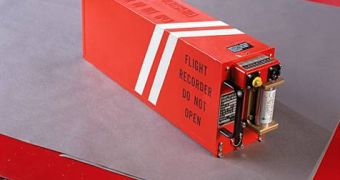Minor incidents or catastrophic crashes may frequently leave behind unanswered questions related to what really led to such events. In order to answer these questions, investigators often turn to flight data recorders and cockpit voice recorders, generally known to us as black boxes. Incredible as it may seem, in fact black boxes have been around us ever since the invention of engine-powered airplanes.
According to documents from L-3 Communications, the Wright Brothers were the first to make use of a device that measured and recorded some of the parameters of the aircraft. After the World War II however, black boxes became widespread and are today being used in all flying craft. Data collected from sensors placed on the airplane is usually being recorded on magnetic tape, but now black box manufacturers are trying to implement solid-state technology into their devices.
Data storage
This is mostly due to the nature and the function of black boxes. Magnetic tapes may occasionally be destroyed by the force of the impact; however solid-state devices, using memory chips to record information would have less chances of being damaged. Furthermore, because memory chips don't have moving parts, they are much more reliable than magnetic tape.
Amongst some of the essential parameters recorded by the black box during flight are acceleration, airspeed, altitude, flap settings, external temperature, cabin temperature and pressure, and engine performance. The number of the recorded parameters can exceed 700 hundred in a large aircraft.
Data from the sensors is first being processed by the flight-data acquisition unit, which manages the recording process, thus assuming the role of buffer between the sensors and the black box. Black box recorders are usually powered by the on-board generators with a DC electric current measuring 28 Volt, or AC electric current or 115 Volt and 400 Hz.
Cockpit Voice Recorders
Cockpit voice recorders, or CVR, record the audio conversations which takes place between the crew of the aircraft and even the ambient noise of the cabin. The sound is being collected by multiple microphones inside the cockpit and recorded in digital format. Because sounds may occasionally be very faint, the CVR is also provided with an associate control unit which pre-amplifies the signal before sending it to be recorded.
Usually, the CVRs are able to record only about 30 minutes of sound before re-cycling the tape. If the CVR is equipped with solid-state recording devices, then it could store up to two hours of sound before recycling memory banks.
Flight Data Recorders
Flight data recorders are destined to record the operating data of the aircraft's systems. Even the smallest action, such as flipping a switch, is recorded by the FDR. According to the Federal Aviation Administration, a commercial aircraft requires a minimum of 11 to 29 parameters to be recorded during flight; however law states that at least 88 parameters must be recorded.
Again, solid-state devices prove to be more efficient at recording data than magnetic tapes, because solid-state recorders can provide with a faster data flow. Not only that, but solid-state FDR can reach storing capacities up to 25 hours.
Crash Survivable Memory Units
This is usually the only part of the aircraft which remains relatively intact in case of a catastrophic impact. CSMUs are specially designed to withstand severe temperatures, impacts and intense pressure. Typical CSMUs, using magnetic tape as recording support, are usually rectangular in shape, and require several layers of insulation and protection against heat and impacts.
After an incident, the CSMU is the only device which is able to provide information related to the state of the aircraft and what caused the unwanted event.

 14 DAY TRIAL //
14 DAY TRIAL //